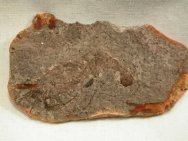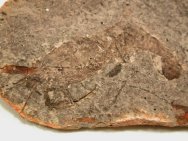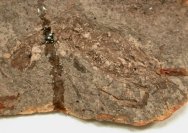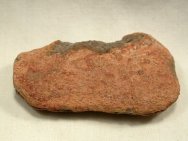Name: : Decapoda;
Ambilobeia karojoi
Phylum Arthropoda;
Subphylum
Crustacea; Class Malacostraca; Order Decapoda; Suborder Pleocyemata
Geological
Time: Early Triassic Olenekian Stage (~240 m.y.a.)
Size: 44
mm long (tip of rostrum to tip of telson, straightened) Matrix: 59 mm
by 30 mm
Fossil Site:
Ambilobe, Madagascar
| 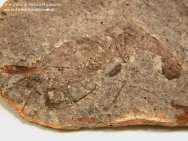 This
nodule from the early Triassic of Madagascar contains a very detailed
fossil shrimp known as Ambilobeia karojoi. This taxon was only erected
three years ago, and the genus derives its name from the locality
in which it is found. Notice the incredible detail preserved here,
remarkable for a specimen nearly a quarter of a billion years old.
What is even more remarkable about nodules from the region is that
unlike most nodules that are part/counterpart examples, this one
is a natural mold, preserving the details of both the left and right
sides with remarkable fidelity. Shrimp are differentiated from the
similar prawns by the structure of their gills, and by the fact
that female shrimp (like all pleocyemates) brood the eggs on their
pleopods (swimming legs). This
nodule from the early Triassic of Madagascar contains a very detailed
fossil shrimp known as Ambilobeia karojoi. This taxon was only erected
three years ago, and the genus derives its name from the locality
in which it is found. Notice the incredible detail preserved here,
remarkable for a specimen nearly a quarter of a billion years old.
What is even more remarkable about nodules from the region is that
unlike most nodules that are part/counterpart examples, this one
is a natural mold, preserving the details of both the left and right
sides with remarkable fidelity. Shrimp are differentiated from the
similar prawns by the structure of their gills, and by the fact
that female shrimp (like all pleocyemates) brood the eggs on their
pleopods (swimming legs).
|
|



